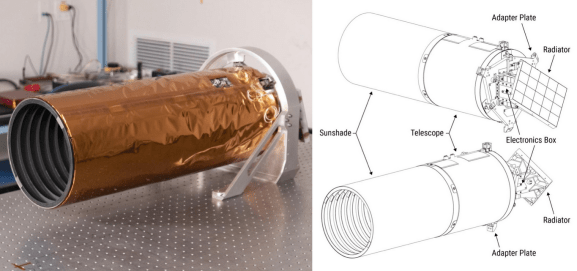Korean Lunar Orbiter Danuri to Investigate Lunar Surface

Credit: David Diebold
On Thursday, August 4, 2022 at 7:08pm EDT, the Korea Aerospace Research Institute (KARI) is scheduled to launch their first lunar mission on a SpaceX Falcon 9 rocket from Cape Canaveral, United States. The rocket will enter a ballistic lunar trajectory, allowing the probe to reach lunar orbit by mid-December.
The Korea Pathfinder Lunar Orbiter will orbit the Moon for one year with four South Korean experiments and one instrument from NASA. Once completed, the Republic of Korea will be the seventh country with a successful lunar probe mission.

Credit: KARI
Earlier this year, the South Korean Ministry of Science and ICT officially named the orbiter “Danuri” (다누리), a portmanteau of the two Korean words dal (달) and nurida (누리다), the words meaning moon and enjoy, respectively. The ministry chose this name from 62,719 submissions in a naming contest. “Danuri” is meant to refer to the orbiter enjoying everything the Moon offers.The space community will enjoy everything Danuri learns about the lunar environment, one of its major science objectives.
In addition to proving and developing critical technologies, Danuri studies the lunar environment as the international space community plans human missions like NASA’s Artemis program. Using KPLO’s instruments, a detailed lunar topography (including in situ resource locations) can be created to select future lunar landing sites.
Two cameras will image the Moon’s surface, delivering more detail about lunar surface composition. While one captures imagery at a high solution of 2.5 meters per pixel, the other, PolCam, is a wide-angle polarimetric camera with the ability to determine materials based on light reflection and scattering. A third camera, NASA’s ultrasensitive ShadowCam, peers into craters and other permanently shadowed areas of the moon. Its pictures will provide information about water and terrain as future surface robotic and crewed missions are planned.

Credit: NASA
The remaining instruments are a magnetometer and gamma-ray spectrometer. The magnetometer will measure weak, localized magnetic swirls that can occur across the lunar surface. In conjunction with PolCam, the spectrometer will assist in determining mineral composition.
If successful, KARI will develop additional lunar orbiters and lunar landers as they continue with their Korean Lunar Program. The original goal was to orbit the moon in 2020 and land on the surface by 2025, but has since been impacted by the pandemic. The next outlined step in the Korean space agency is developing domestic spacefaring resources, including their own rocket.
Edited by David Diebold.
